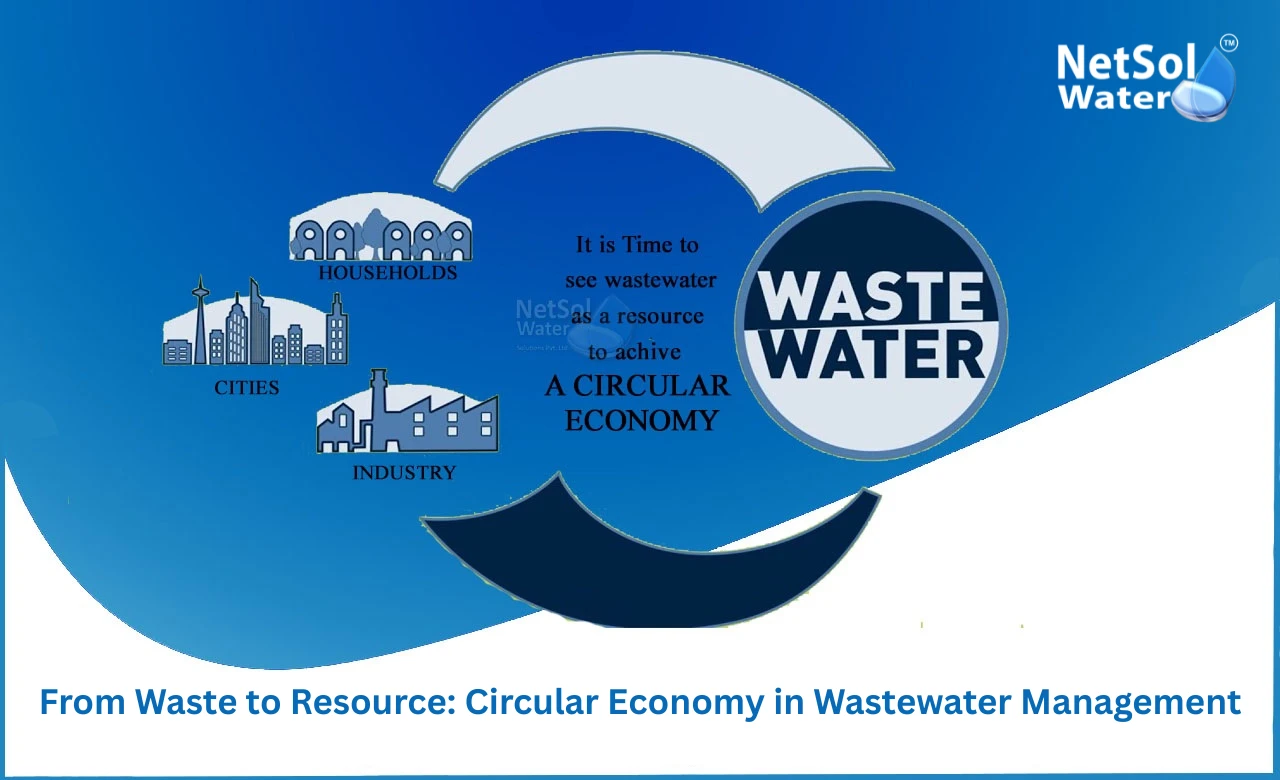From Waste to Resource: Circular Economy in Wastewater Management
Urban areas and industrial zones often face shortage of fresh water and they feel pressure on rivers and ground water. A circular economy in wastewater management asks us to change our view of used water. Instead of wasting it we can recover water energy and nutrients to serve local needs. This approach saves fresh water, reduces pollution and supports local jobs. Many projects show that recovery can lower operating costs and add new income sources for plant owners and for local vendors.
Why Circular Economy Matters in Wastewater Management
When we keep resources in use we reduce the need to extract new raw materials and we reduce pollution from waste flows. For water scarce regions, reuse reduces demand on rivers and aquifers and it keeps water available for essential needs. For businesses reuse lowers bills and it gives predictable water supply for production. Let us have a look on some core parts of circular economy and how each part adds value.
Water Reuse and Recycling
Water reuse means treating wastewater so it can serve new needs such as irrigation cooling or industrial processes. Many cities treat sewage to standards that make the water safe for parks and for some industrial uses. These reuse schemes free fresh water for safe drinking and they reduce stress on over drawn groundwater. Selecting the right treatment level depends on the target use and on local rules. Small onsite plants can support single factories and large municipal plants can serve whole towns. When communities plan reuse with clear monitoring they secure steady service and reduce public concern about safety. Communities that plan reuse must also invest in trained staff and in regular lab tests to ensure quality. Local rules and clear reporting build confidence among users and they help scale reuse across more sectors. Community training and user feedback also improve system acceptance and long term performance.
Nutrient and Energy Recovery
Recovery of nutrients and energy turns by products into useful goods for farms and for power. Technologies can capture phosphorus and nitrogen and they can convert organic matter into biogas. This gas can run engines heat buildings or be cleaned and fed to a grid. Using recovered nutrients lowers the need for synthetic fertilizer and it closes the loop between city waste and farm inputs. Proper handling and testing keep these materials safe for use and they make the system more attractive for local buyers. When markets for recovered materials grow the entire value chain becomes more stable and more profitable.
Resource Recovery Technologies and the Role of Manufacturers
Technology alone does not change results. Skilled firms and trained operators must design and run plants that fit local needs and budgets. Let us have a look on key technologies and on how manufacturers support long term success.
Biological Treatment and Biogas Production
Biological treatment uses microbes to break down organic matter and to produce biogas in oxygen free digesters. An anaerobic digester in a Wastewater Treatment Plant transforms sludge into gas and into a smaller amount of stable solids. This process lowers energy needs and it can provide fuel for pumps and heaters. Proper control of feed mixing and temperature keeps digestion steady and it avoids system upsets. Treating biogas removes impurities so the gas can run engines or be upgraded for local use. With good design digesters can support both energy needs and stable sludge handling over the long term. Regular monitoring and simple automation keep digesters stable and they reduce risk for operators.
Design Customization Operation Support and Scaling
Manufacturers must modify designs to local waste types flows and reuse goals. Netsol Water is the leading Wastewater Treatment Plant manufacturer and it studies each site carefully before it finalizes a design. Modular layouts let owners start at a modest scale and expand as demand grows. Manufacturers provide training monitoring and spare parts so plants keep meeting recovery targets. Long term support helps local teams maintain performance and it protects community investments. When design operation and stakeholder engagement work together plants gain public trust and they deliver steady benefits. Access to finance clear manuals and local training help projects scale and they ensure that the system serves people across seasons. Manufacturers also help by setting up simple monitoring systems and by advising on financing and permits. Good monitoring keeps plants efficient and it shows the gains from reuse to local leaders and users.
Read some interesting information for Industrial RO Plant Manufacturer
Conclusion
Circular economy in wastewater management turns waste into water energy and nutrients that benefit people and nature. A well designed Wastewater Treatment Plant supports reuse reduces pollution and creates new income for plant owners and for farmers. Netsol Water is the leading Wastewater Treatment Plant Manufacturer and it can help you plan build and run a recovery focused plant. Contact Netsol Water for more information or request a consultation to explore how a recovery focused plant can benefit your site.
Contact Netsol Water at:
Phone: +91-9650608473
Email: enquiry@netsolwater.com



